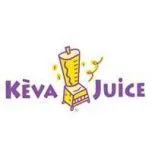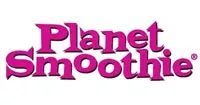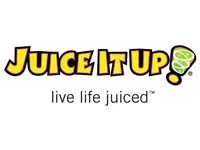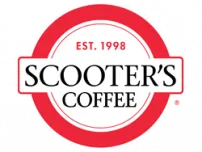Summary
U.S. juice & smoothie bars are about $4.5B in 2025 and still tied to health/convenience demand. Rents average $24.9/sf/yr nationwide, staff run $14–15/hr, and commercial power ranges ≈9¢–30¢/kWh by state. Because smoothies rely on fresh fruit/veg, track USDA ERS price shifts and protect margin with add-ons, bowls, and delivery fees.
A smoothie franchise sits where convenience meets wellness. Guests want fast, fresh, and customizable drinks they can grab on the go, and the category delivers that with standardized recipes, compact equipment, and lean prep. Compared with hot kitchens, the line is simpler — blenders, refrigeration, POS, and a small prep area handle most of the work — so onboarding is faster and shrinkage is easier to control. The segment also taps two strong dayparts (morning and mid-afternoon), so units capture habitual visits from commuters, students, and fitness traffic. For first-time owners, smoothie franchise opportunities offer clear operating manuals and contained capex; for multi-unit operators, kiosk, inline, and drive-thru footprints make it easy to repeat the model across trade areas without overextending the team. Because the core menu is blender-based, brands can rotate seasonal flavors, plant-based options, and protein add-ons without re-engineering the line, keeping novelty high while throughput stays stable.
Market snapshot: U.S. juice & smoothie bars are estimated at about $4.5 billion in 2025 with growth in the 4–5% band, driven by health positioning, portable formats and loyalty apps.
Cost environment to surface for readers
Retail rent (U.S.)
- U.S. average asking rent: $24.92/sf/year (CBRE, Q3 2025).
- Walkable/lifestyle corridors: $40–90/sf; Manhattan corridors go much higher.
- Meaning: the same 700–900 sq ft smoothie box can pay 2–3× rent just by moving to a coastal/tourist street.
Commercial electricity (Aug 2025, EIA)
- Low-cost states (ND, TX): ≈7–10¢/kWh
- Florida / Sunbelt: ≈11–13¢/kWh
- Northeast / California / Hawaii: ≈20–37¢/kWh
Smoothies don’t have fryers, but they do have 24/7 refrigeration, ice, blenders and HVAC in hot states, so power still moves the P&L.
Labor
- “Fast Food and Counter Workers” sit around $12–13 median and $14–15/hr in many markets.
- In California, covered fast-food employers must pay $20/hr from Apr 1, 2024 (AB 1228), so any CA-heavy roll-out needs a separate model.
Produce (USDA ERS)
- ERS tracks >150 fruits/vegetables with per-pound and per-cup-equivalent prices; most items move 2–5% YoY, but berries, leafy greens and imported fruit swing more, so frozen backups or seasonal menu pricing help.
Investment and Fees
| Format / Model | Initial investment (range) | Franchise fee (range) | Ongoing fees (royalty / ad fund) |
|---|---|---|---|
| Kiosk (mall/transit) | $80,000–$220,000 | $15,000–$30,000 | 4–6% / 1–2% |
| Inline shop (small box) | $200,000–$500,000 | $20,000–$40,000 | 4–6% / 1–3% |
| Drive-thru smoothie (pad/end-cap) | $400,000–$900,000 | $25,000–$45,000 | 4–6% / 1–3% |
| Mobile / trailer / ghost kitchen | $50,000–$150,000 | $10,000–$25,000 | 4–6% / 0–2% |
Cost overlay:
| Cost driver | Low-cost Sunbelt inline | Coastal / tourist corridor |
|---|---|---|
| Rent | $20–25/sf/yr | $40–70+/sf/yr |
| Power | 9–12¢/kWh | 20–30+¢/kWh |
| Crew base | $14–15/hr | $17–20/hr (CA can be $20 for covered fast-food) |
| Produce | USDA ERS baseline | USDA ERS + freight/seasonality |
Takeaway: smoothie has a lower average check than burgers, so rent and fruit spikes hurt faster — you need add-ons to cover it.
Startup costs and ongoing fees
Startups typically cover build-out, flooring/plumbing, refrigeration and freezers, high-duty blenders, sinks, POS, signage, opening inventory, training, and working capital. Ongoing spend combines royalty and ad fund with labor, produce and dry goods, packaging, occupancy, utilities, and third-party delivery commissions. Unit economics are sensitive to three levers:
- Throughput — drinks per hour at peaks.
- Attach rate — protein, boosts, toppings, acai bowls.
- Waste — especially for berries, greens, and cut fruit.
A clean prep routine (par levels by daypart, FIFO, daily dump log) keeps waste at 3–6% instead of 10%+. Use USDA ERS prices as the “is this month higher than normal?” reference.
Delivery note: delivery marketplaces usually sit in the 15 / 25 / 30% band for delivery services and around 6% for pickup, so smoothies should be engineered for delivery (sealed lids, right cup size, no heavy melt) and kept as an extra channel, not the main one.
Popular smoothie franchise formats
- Kiosk / counter — rent-efficient and compact; ideal for malls, transit hubs, and campuses.
- Inline shop — neighborhood-friendly, room for bowls/snacks/limited seating, better merchandising.
- Drive-thru — maximum convenience and daypart capture; site plan and stacking capacity matter.
- Mobile / ghost — lean front-of-house and event-driven; depends on digital discovery and partnerships.
Each format comes with a different real-estate equation. Kiosks trade visibility for low fixed costs. Inline units benefit from signage and walk-by traffic. Drive-thru captures utility visits and rainy-day traffic but needs municipal approval. Ghost/mobile units trade rent for marketing spend.
Requirements & ideal franchisee profile
Most systems look for adequate liquid capital and net worth, ability to run checklists, and steady people leadership. Foodservice background helps but isn’t mandatory if the brand gives strong training and field support. Good operators cross-train staff for register, bar and prep, set standards for sanitation and allergen handling, and keep a tight cold-chain. Procurement discipline matters: lock delivery windows with your produce supplier, align storage to demand, and monitor short-shelf-life SKUs (cold-pressed, cut fruit). For multi-unit plans, build a staffing bench and a traveling opening team early.
Compliance:
- Food safety → follow your state’s adopted FDA Food Code (temps, handwash, sanitizer).
- Hiring → Form I-9 everywhere; E-Verify rules vary by state, so check before opening in AZ, FL, AL, etc.
How to choose a smoothie franchise
- Format fit — kiosk vs inline vs drive-thru vs ghost.
- Throughput — check blender speed, batch routine, and real peak staffing on live stores.
- COGS discipline — produce volatility (USDA ERS), waste on greens/berries, packaging.
- Support stack — training, field visits, procurement leverage, loyalty/app.
- Scalability — development schedule, territory rights, multi-unit path.
P&L: always run two scenarios — (1) Sunbelt inline: rent ≈ $25/sf/yr, power 10–12¢, labor $14–15/hr; (2) coastal/tourist: rent 45–70+, power 20–30¢, labor 18–20/hr (CA fast-food → $20/hr). Same sales, different bottom line.
Franchise FAQ
What is the initial franchise fee?
The initial franchise fee depends on the brand and market, usually from $10,000 to $45,000.
Do you help with international expansion?
Yes, TopFranchise works with brands that are ready to expand to new countries and regions.
How can I contact the franchisor?
You can fill in the request form on the franchise page, and the brand representative will contact you.




















